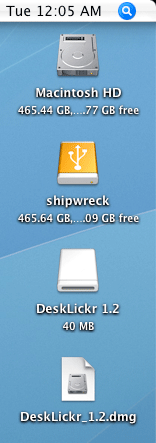
- #WHAT DOES DMG FILE STAND FOR HOW TO#
- #WHAT DOES DMG FILE STAND FOR DRIVER#
- #WHAT DOES DMG FILE STAND FOR MAC#
- #WHAT DOES DMG FILE STAND FOR WINDOWS#
qb2015 extension) where you want it to be. You cannot open your company file from the disc image, as it is read-only, so you’ll need to copy it to a directory on your hard drive in order to open it, such as Documents or your desktop.
#WHAT DOES DMG FILE STAND FOR HOW TO#
This will tell you step-by-step how to restore your company file and attachments library. Double-click on the Restore Instructions icon to open the PDF. A new window will open, containing your file, attachments library, and restore instructions. Go to your backed up disk image and double-click it to mount it (open it). dmg file QuickBooks creates when it backs up your data includes a copy of your company file and your Attached Documents Library (if you use and back up attachments). Select it and navigate to the Attachments folder in your Documents directory. You'll see a pop up menu asking you to locate your Attachments folder. Once it opens choose QuickBooks->Preferences. Your company file has the file extension. Then launch QuickBooks by double clicking on your newly restored Quickbooks company file in your Documents folder. If you want to restore both you copy both over. If you want to restore your Attachments you copy the Attachments directory from the disk image to your hard drive (again, the default is the Documents folder). If you want to restore your company file you copy the QuickBooks company file onto your hard drive (default is to place it in your Documents folder). Inside of that will be the backup of your QuickBooks company file and the backup of your Attachments folder. Once you double click on the backup dmg to mount it you'll see a folder open on your desktop. I assume you are using attached documents and backing them up and want to restore them (if that isn't what you are trying to do please spell it out in more detail). "This is not a valid Attached Documents Library" is the message you get when you try to select a folder for your attached documents that isn't an attached documents folder (ie.
#WHAT DOES DMG FILE STAND FOR MAC#
The key can be stored automatically in your Mac keychain. Its a very safe format.ĭisk images are automatically compressed, again in a completely non-proprietary way.įinally the disk image allows you to specify AES encryption. Years from now you should still be able to open it and get at the data.ĭisk images are checksummed - they are verified valid before mounting. It isn't an Intuit file format - it is Apple's. The disk image also is "non-proprietary". A backup isn't a backup if it doesn't include all your data, including attachments.
#WHAT DOES DMG FILE STAND FOR WINDOWS#
These aren't in the company file on either Mac or Windows (it would make the file much too large for transmitting to your accountant). The disk image also allows for the storage of all your attachments on the backup. Refer to the following message from Ubuntu's mailing list if you want to learn more.We deliberately made the "CD" read-only because with previous systems users were opening their backups, entering transactions, and then later opening their real company files and saying the work was deleted by QuickBooks.
#WHAT DOES DMG FILE STAND FOR DRIVER#
Warning: The driver descriptor says the physical block size is 2048 bytes, but Linux says it is 512 bytes.Īll these warnings are safe to ignore, and your drive should be able to boot without any problems. Try making a fresh table, and using Parted's rescue feature to recover partitions. Is this a GPT partition table? Both the primary and backup GPT tables are corrupt. Or perhaps you deleted the GPT table, and are now using an msdos partition table. Perhaps it was corrupted - possibly by a program that doesn't understand GPT partition tables. However, it does not have a valid fake msdos partition table, as it should. dev/xxx contains GPT signatures, indicating that it has a GPT table.



Ubuntu images (and potentially some other related GNU/Linux distributions) have a peculiar format that allows the image to boot without any further modification from both CDs and USB drives.Ī consequence of this enhancement is that some programs, like parted get confused about the drive's format and partition table, printing warnings such as:


 0 kommentar(er)
0 kommentar(er)
